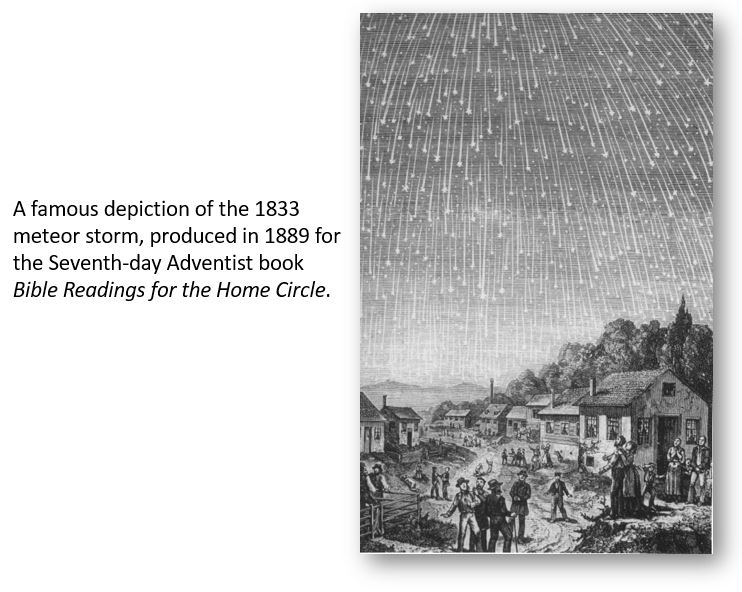Shooting stars - a shower of fire
In the Pioneer history of northwestern Pennsylvania, McKnight (1905:369) describes a spectacular meteor shower:
"On Wednesday, November 13, 1833, about five o'clock a.m., the heavens presented a spectacle in this wilderness as has seldom been seen in the world. It struck terror to the hearts of those who saw it, and many ran away from home to their neighbors, declaring that the 'day of judgement had arrived.' The duration of the display was about an hour.
The theory of meteorites is that they are parts of comets. The greatest fall of meteorites in the history of the world was in 1833. This shower was the result of the disappearance of a comet of which the meteorites were parts, and they are still falling. Though that was seventy eyars ago, stars still continue to shoot down the path, and astronomers say that they are the remaining pieces of the same vanished comet."
McKnight's description of the origin of meteors is pretty close. We now know that this meteor storm in 1833 were the Leonids, an annual meteor shower associated with the comet Tempel-Tuttle. About every 33 years, this annual event is characterized as a meteor storm when as many as 1,000 meteorites may be visible each hour. In the meteor storm of 1833, it is estimated that at its peak, 100,000 meteors per hour were produced. Some estimates suggest that more than 240,000 meteors were produced in a nine-hour long period. The newspapers across the United States carried articles of the event which was interpreted by some as a sign of hope and by others that the end of the world was near.
The storm was visible across North America east of the Rockies. In case you're interested, the Leonids will peak on November 17, 2022 with an expectation of 250-300 brighter than average meteors. The next possible meteor storm, if the 33-year cycle holds, will be in November 2031.

